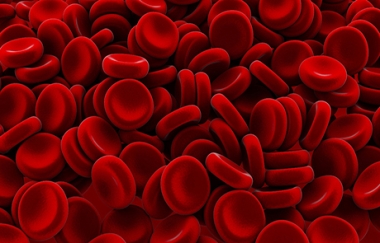Stephen E. Welty, MD
Bronchopulmonary dysplasia (BPD) was first described in 1967 as a complication of prematurity, and the pathophysiology was thought to include oxygen toxicity and barotrauma in premature infants with hyaline membrane disease.
In this form of BPD, the lung pathology primarily consisted of an injured, fibrotic lung. Intense research efforts have been directed toward determining mechanisms for the development of BPD and interventions to prevent or ameliorate its severity. Since then, surfactant administration and other improvements in neonatal intensive care have improved the acute condition of premature infants.
It was fair to speculate that the incidence of BPD would fall. Unfortunately, chronic lung disease still develops in extremely premature infants that do not have significant ventilatory or supplemental oxygen needs in the acute course of prematurity.
This form of new BPD is less fibrotic than its earlier counterpart, and there is a significant component of delayed alveolar development and perhaps permanent alveolar underdevelopment.(1,2) Currently, the mechanisms for the development in the new form of BPD have not been fully elucidated and the contribution of oxygen toxicity is debatable.
However, it is plausible that even low concentrations of supplemental oxygen in premature patients with developmentally poorly prepared antioxidant defense mechanisms may generate significant oxidant stresses and lung injury secondary to oxidation of specific macromolecules.
In addition, inflammatory cell accumulation and activation in the lung may also generate oxidants and oxidant stresses that also oxidize macromolecules.
There are two predominant approaches to determine the contribution of oxidations to the development of new BPD. One approach is to measure biomarkers of oxidation in premature infants and then determine whether the extent of biomarker oxidation is associated with the development of BPD.
The primary disadvantage of this approach is that biomarker evaluations in human subjects is frequently labeled a fishing expedition. Determining that there is a strong association between a biomarker of oxidation and a disease does not necessarily mean that the oxidation is a mechanism for the development of the disease.
The primary advantage to this approach is that it may ultimately lead to studies that determine specific mechanisms for the development of BPD, and hence specific interventions to prevent BPD. Another approach is to intervene with an antioxidant and to determine the effect of the intervention on disease development.
The primary advantage here is that it may lead to interventions relatively quickly that reduce the incidence or severity of BPD. The potential disadvantage is that if the intervention is efficacious, the specific mechanisms for efficacy may not be defined.
Furthermore, if the intervention is not successful it does not necessarily mean that intervention is not a good idea; a slight change in study design may be efficacious. In this issue, Ahola et al present the results of their work in which they tested the hypothesis that N-acetylcysteine (NAC) administration reduces the incidence and/or severity of BPD.(3)
It was disappointing that NAC administration started early in life in a susceptible population did not reduce the incidence of BPD.
However, the authors should be commended because the rationale for the study was strong, the study design solid and powered appropriately, and the endpoints were important and included BPD incidence and severity, along with other morbidities associated with premature delivery.
The rationale for administration of NAC is that this form of cysteine administration should increase the concentration of glutathione (GSH).
Glutathione is a thiol-containing antioxidant that is present in high concentrations intracellularly and in body fluids including plasma and lung lining fluid.
GSH is capable of detoxifying hydrogen peroxide and other peroxides in a reaction catalyzed by GSH-peroxidase. Previous work has shown that plasma GSH concentrations are low in premature infants(4,5) and are inversely proportional to gestational age.(4)
Adequate cysteine concentrations are crucial in supporting GSH synthesis. The authors correctly indicate that cysteine may be deficient in premature infants, and thus NAC administration may lead to higher concentrations of plasma and intracellular GSH. In addition, NAC itself has been shown to have some antioxidant properties in vitro, although direct in vivo evidence of antioxidant activity of NAC is missing.
There are several reasons why NAC may not have changed the incidence of BPD. Of note, total plasma glutathione (GSX) concentrations were not different in NAC and placebo groups in this study. The total plasma GSX concentrations, the vast majority of which is probably GSH, were ~20 µM, whereas the mean GSH concentrations were <2 µM in the study by Jain et al,5 and between 2.0 and 2.5 µM in the study by Smith et al.4 These differences suggest that NAC administration was given to infants that were not deficient in GSH or, for that matter, in cysteine.
The reason that GSX and cysteine concentrations were not low in either of the administration groups may be because of the early supplementation of all infants in the study with intravenous amino acids that included additional cysteine+cystine. This type of early supplementation in premature infants is being done more frequently in neonatal intensive care units. Another possible reason that NAC administration in these studies did not reduce the incidence of BPD is that the administration may have been started too late to inhibit injurious oxidations.
The investigators started the administration of NAC at ~24 h of age. In studies in which lipid peroxidation products were measured in premature infants, Nycyk et al found that exhaled pentane levels on the first day of life were approximately twice as high in infants that developed BPD than in infants that did not develop BPD.(6)
Ogihara et al found that plasma aldehyde concentrations, which are also products of lipid peroxidation, were higher in premature infants that developed BPD than in infants that did not develop BPD on the first day of life as well.(7)
These studies indicate that potentially injurious oxidations are occurring at higher levels very early in the first day of life in premature infants destined to develop BPD, and that antioxidant interventions may be most efficacious when given as quickly as possible after delivery. This is now the second large randomized trial of an antioxidant intervention in premature infants designed to reduce the incidence of BPD. Davis et al administered intratracheal recombinant human copper-zinc superoxide dismutase or placebo to 300 premature infants at high risk of developing BPD; there was no reduction in the incidence of BPD.(8)
However, this study did report a reduction in wheezing episodes in the first year of life in infants treated with copper-zinc superoxide dismutase.(8)
There are promising antioxidant therapies on the horizon. In a recent interventional study, Chang et al found that administration of a synthetic catalytic antioxidant to prematurely delivered baboons ventilated in 100% oxygen improved lung morphometry and decreased indices of lung injury and inflammation.(9)
This antioxidant intervention was done in an animal model that mimics the older form of BPD. We look forward to studies in which this type of antioxidant intervention is tested in models of the newer form of BPD. In summary, despite the lack of efficacy of NAC administration in preventing BPD, the study of Ahola et al had a strong rationale, the design was good, and the results and interpretations were presented well. Studies like this and other antioxidant interventions provide important clues into the pathogenesis of BPD.
Clearly, more research to determine mechanisms for the development of BPD and to design rational interventions are needed before we can diminish the impact of this important morbidity in our prematurely delivered patients.
December 2003 • Volume 143 • Number 6 The Journal of Pediatrics
1. Coalson JJ, Winter VT, Siler-Khodr T, Yoder BA. Neonatal chronic lung disease in extremely immature baboons. Am J Respir Crit Care Med 1999;160:1333-1346 medline
2. Margraf LR, Tomashefski JF Jr., Bruce MC, Dahms BB. Morphometric analysis of the lung in bronchopulmonary dysplasia. Am Rev Respir Dis 1991;143:391-400. medline
3. Ahola T, Lapatto R, Raivio KL, Selander B, Stigson L, Jonsson B, et al. N-acetylstysteine does not prevent bronchopulmonary dysplasia in immature infants: a randomized controlled trial. J Pediatr 2003;143:713-719. medline
4. Smith CV, Hansen TN, Martin NE, McMicken HW, Elliot SJ. Oxidant stress responses in premature infants during exposure to hyperoxia. Pediatr Res 1993;34:360-365. medline
5. Jain A, Mehta T, Auld PA, Rodrigues J, Ward RF, Schwartz MK, Martensson J. Glutathione metabolism in newborns: evidence for glutathione deficiency in plasma, bronchoalveolar lavage fluid, and lymphocytes in prematures. Pediatr Pulmonol 1995;20:160-166. medline
6. Nycyk JA, Drury JA, Cooke RWI. Breath pentane as a marker for lipid peroxidation and adverse outcome in preterm infants. Arch Dis Child Fetal Neonatal Ed 1998;79:F67-F69. medline
7. Ogihara T, Hirano K, Morinobu T, Kim H-S, Hiroi M, Ogihara H, Tamai H. Raised concentration of aldehyde lipid peroxidation products in premature infants with chronic lung disease. Arch Dis Child Fetal Neonatal Ed 1999;80:F21-F25. medline
8. Davis JM, Parad RB, Michele T, Allred E, Price A, Rosenfeld W. North American Recombinant Human CuZnSOD Study Group. Pulmonary outcome at 1 year corrected age in premature infants treated at birth with recombinant human CuZn superoxide dismutase. Pediatrics 2003;111:469-476. medline
9. Chang LY, Subramaniam M, Yoder BA, Day BJ, Ellison MC, Sunday ME, et al. A catalytic antioxidant attenuates alveolar structural remodeling in bronchopulmonary dysplasia. Am J Respir Crit Care Med 2003;167:57-64 medline


















השאירו תגובה
רוצה להצטרף לדיון?תרגישו חופשי לתרום!